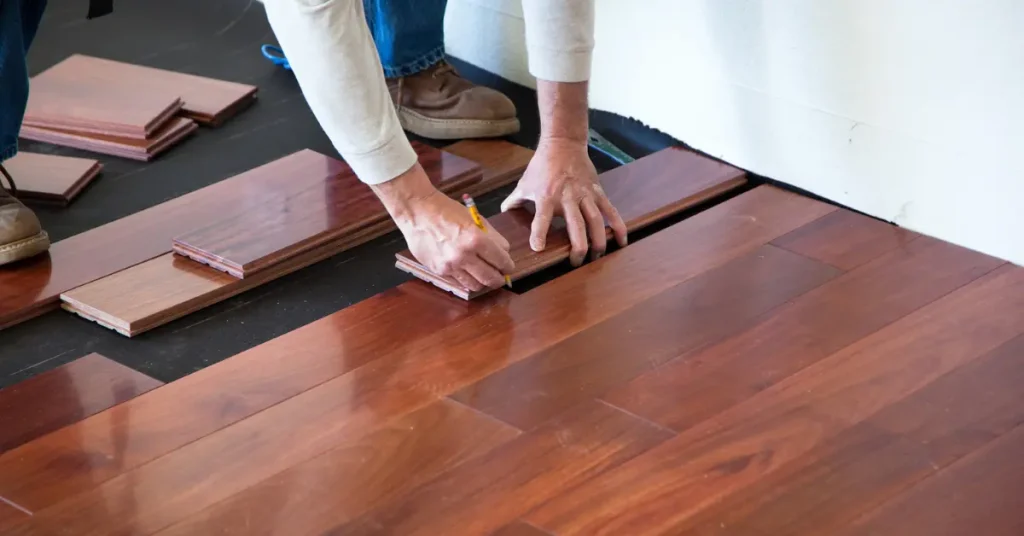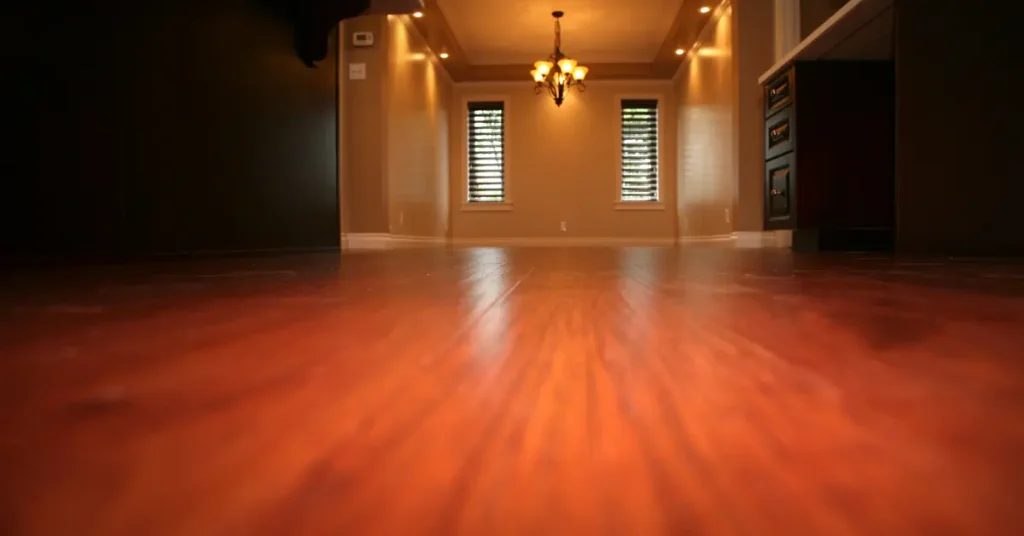
Choosing the right flooring for your home or business can be a daunting task, especially with so many options available in the market. Quality floors not only enhance the aesthetic appeal of a space but also contribute to its functionality and overall value. With various materials, styles, and costs to consider, understanding what to look for is crucial.
Are you overwhelmed by the options? Fear not! This comprehensive guide will break down important factors such as materials, durability, costs, and maintenance, guiding you toward making an informed decision for your flooring needs. Keep on reading!
Understanding Different Flooring Materials
When it comes to selecting quality floors, the type of material is paramount. Each flooring material has its unique qualities and is suited for different applications. Here’s a look at some of the most popular flooring types:
Hardwood
Hardwood floors are known for being strong and lasting a long time, sometimes for decades if properly cared for. They come in many types, colors, and finishes, so they can match almost any room style. Whether you prefer dark or light tones, there’s a hardwood that fits your home.
Laminates
Laminate flooring looks like real wood but costs less. It’s tough against scratches and stains, which makes it a good choice for busy homes. However, it might not hold up well in very wet areas, like bathrooms or basements, so it’s important to keep it dry.
Vinyl
Vinyl flooring has become very popular because it’s affordable and easy to clean. It comes in sheets, tiles, or planks, and it resists moisture well, which makes it good for kitchens or bathrooms. Vinyl is also available in many styles, including some that look like natural wood or stone.
Tile
Tile floors, like ceramic, porcelain, and stone, are very durable and perfect for areas that get a lot of moisture, such as kitchens and bathrooms. Tiles are also easy to clean, making them great for high-traffic areas. They can also last a long time and come in a variety of designs.
Carpet
Carpet gives rooms a soft, cozy feel, and it’s great for making a space feel warmer. It comes in many styles and colors, so you can easily find something that matches your room. However, carpet needs regular cleaning and can get stained by spills, making it harder to maintain than other flooring types.

Assessing Costs and Budgeting
Quality floors represent a significant investment, so establishing a budget is essential. Factors impacting your flooring costs include:
Material
The type of material you choose for your flooring can impact your budget a lot. Hardwood floors tend to be more expensive than options like laminate or vinyl because they use natural wood and require more work to install. However, vinyl or laminate flooring can still give you a great look at a lower price. It’s important to choose a material that fits your budget and your needs for durability and appearance.
Installation
The cost of installation can add up quickly, especially if you hire professionals. Materials like tile or hardwood may require special skills to install, which can raise the price. If you decide to install the flooring yourself, you might save money, but keep in mind that it could be harder to get a perfect finish without professional help. DIY installation can also take more time and effort.
Square Footage
The size of the area you’re covering plays a big role in how much your flooring will cost. The larger the space, the more materials you will need. This means your total cost for both the materials and the installation will increase. Be sure to measure your space correctly to get an accurate estimate of how much flooring you’ll need.
Extra Features
If you want additional features like underlayment (a layer that helps with noise reduction or moisture control), new baseboards, or eco-friendly options, they can add extra costs. These features can be important for improving comfort, appearance, or environmental impact, but they can increase your overall spending. Make sure to factor these into your budget when planning your flooring project.
Evaluating Durability and Maintenance
Durability is a critical factor in determining the long-term value of your flooring. High-quality floors should withstand everyday wear and tear, especially in high-traffic areas. Here are some pointers:
Traffic Level
Consider the foot traffic in the area where you’ll install the flooring. For example, hardwood may not be the best option for a busy household with pets.
Moisture Resistance
In areas prone to moisture, such as bathrooms and kitchens, opt for waterproof or water-resistant materials. COREtec Soft Step waterproof vinyl is a fantastic choice. It combines durability and comfort without moisture worries.
Scratch and Stain Resistance
Look for flooring materials that are inherently resistant to scratching or staining. This is true, especially in homes with children or pets.
Understanding the maintenance needs of your flooring choice is also important. Natural materials, like hardwood, require regular sealing and refinishing, while vinyl and laminate options typically just need a routine cleaning.

Considering Style and Aesthetic Appeal
Your flooring should complement your home’s design and meet your personal style preferences. Some key considerations include:
Color
When choosing a color for your flooring, think about how it will match the rest of your room. Light colors, like beige or pale gray, can make a room feel bigger and brighter, while darker colors, like deep brown or charcoal, can make a space feel more inviting and cozy. Pick a color that helps the room feel comfortable and suits your style.
Texture
The texture of your floor changes how it looks and feels. Smooth floors, like polished wood or sleek tiles, give a modern and clean look. On the other hand, textured floors, such as wood with natural grain or stone tiles, can make the room feel warmer and more rustic, adding a lot of character.
Patterns
The way the flooring is arranged can change how the room looks. Popular patterns, like herringbone or chevron, can give the floor a unique, stylish touch. These patterns can draw attention and make your floor a focal point, making the space feel more interesting and attractive.
Visualizing how different styles will look in your space can be aided by online design tools or by requesting sample swatches from suppliers.
Understanding Environmental Impact
Today’s environmentally conscious consumers often consider the sustainability of their flooring choices. Here are some tips to help you choose quality floors with a smaller carbon footprint:
Materials
When picking flooring, try to choose materials made from renewable resources, like bamboo or cork. These materials grow back quickly and have less impact on the environment. Some flooring products are also certified by organizations that set standards for being environmentally friendly, which means they are a good choice for a greener home.
Manufacturing Processes
Look for flooring companies that use eco-friendly practices in how they make their products. This might include using less energy, reducing waste, or using safe chemicals in production. Choosing these companies supports a cleaner environment and helps lower your carbon footprint.
Recyclability
It’s also important to pick flooring that can be recycled or repurposed when it’s no longer needed. Some materials, like certain types of vinyl or wood, can be reused, reducing waste that ends up in landfills. This helps the planet by keeping unnecessary materials out of waste sites and gives the flooring a longer life cycle.
Many manufacturers now offer sustainable flooring options, ensuring you can choose quality floors while still being environmentally responsible.
Finalizing Your Decision
Once you’ve considered materials, costs, durability, style, and environmental impact, take time to finalize your decision. Here are steps to guide you towards a final choice:
Research
Before making a decision, take the time to read customer reviews or ask experts about different types of flooring. Reviews from people who have already used the flooring can give you a good idea of its quality and performance. You can also check expert opinions to learn about the pros and cons of each flooring type, helping you make a more informed choice.
Samples
Always ask for samples of the flooring you’re considering. This way, you can see how it looks in your home and feel how it feels underfoot. It’s important to check how the colors match your existing furniture and how the texture works with your lifestyle. Samples help you decide if the flooring is the right fit for your space before you buy it.
Consult Professionals
If you’re unsure about what type of flooring to choose or how to install it, consulting a flooring professional can be helpful. They can give you personalized advice based on your needs, preferences, and the space you’re working with. Professionals can also assist with installation, ensuring the job is done correctly and efficiently, saving you time and effort.
Taking these steps ensures you choose quality floors tailored to your needs and preferences.
Investing in Quality Floors
Selecting quality floors is an essential part of any renovation or building project. By understanding the various materials, evaluating costs, and considering aesthetics and environmental impact, you can choose a flooring option that not only meets your needs but enhances your space for years to come.
Don’t forget to explore all your options, including innovative solutions like COREtec Soft Step waterproof vinyl, that can elevate your home’s style while offering peace of mind against moisture and damage.
For more topics aside from flooring solutions, visit our blog!
FURTHER READING









